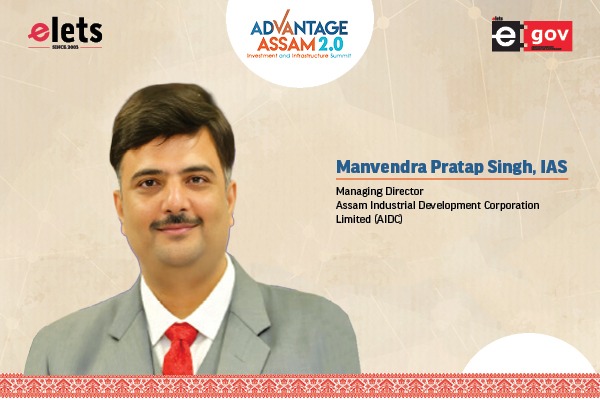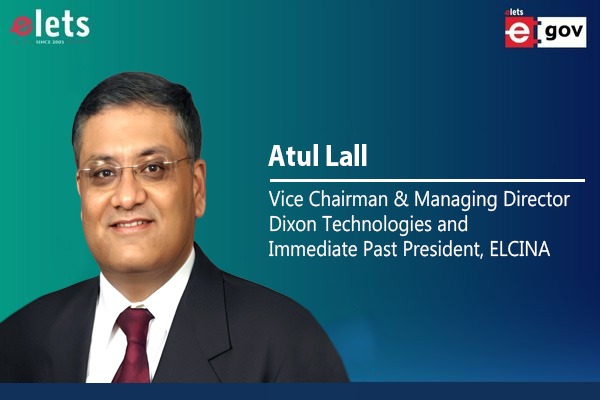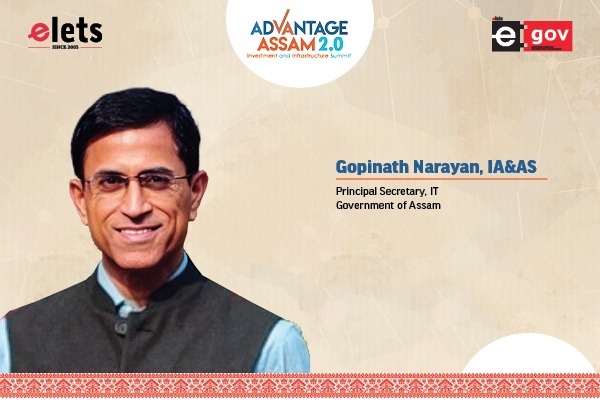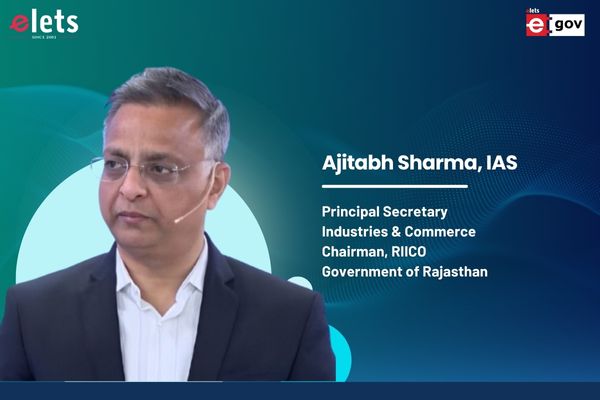
Security is probably one of the fastest-growing businesses within the public sector, aside from connectivity. Cisco is fundamentally about connecting the unconnected. Within the realm of security, their AI solutions are the most prominent across their portfolio, shared Trideeb Roy, Managing Director, Public Sector, CISCO, in an exclusive interaction with Garima Pant of Elets News Network (ENN). Edited Excerpts:
We all are aware that Cisco has a very strong web presence in various AI domains. So how would you strategically position Cisco’s AI solutions to address these specific needs of the public sector in India?

Before discussing Cisco’s role in AI, it’s important to highlight that as the leader of the public sector business for the country, I must emphasise that India is the most digitised country in the world. With a digital footprint that includes approximately 1.35 billion Aadhar users, around 60 million DigiLocker users, and about 1.7 million MyGov Application users, India is at the forefront of digital transformation. We also have 100 operational smart cities and 13.4 million rural digital literacy initiatives. Given this extensive digitisation, it is natural that the next step involves automation and AI. This progression aligns with the government’s announcement of a $1.2 billion AI mission.

Cisco is integrated into every layer of the government’s AI solutions. Our AI product portfolio is evolving across various sectors, including our data centres, security, and collaboration tools. AI is embedded in all our solutions, whether in law enforcement, connected judiciary, or basic connectivity. As digitisation and capacity building deepen, we will see increased automation within government operations, driven by Cisco’s technologies.

How would you strategically position Cisco’s AI solutions address the specific needs of the public sector?

So far, we are seeing the uptake of AI primarily in surveillance and law enforcement, where we are integrating automation in the publicsector. This trend is also evident in the public cloud within the public sector, where AI is driving connectivity between compute, storage, and network resources. AI is being utilised across various formats in the public sector, whether in the sovereign cloud, as referred to by the government, or in law enforcement, data centres, and security. AI is embedded in all the technologies we provide for government and public sector applications.
What are the various ways in which AI is being used to enhance cybersecurity within the public sector. Specifically, how is AI being utilised to safeguard critical infrastructure and sensitive data?
Security is probably one of the fastest-growing businesses within the public sector for us, aside from connectivity, since Cisco is fundamentally about connecting the unconnected. Within the realm of security, our AI solutions are the most prominent across our portfolio. We offer automation through advanced large language models integrated into our security solutions, whether in the cloud or on the edge.
We now have our own models designed to create these security-focused models, which enable automation and provide a consistent view of threats and threat perceptions across our security portfolio, whether in the cloud, on the edge, or for end users.
Our AI are embedded into our cybersecurity offerings, and most importantly, into our firewalls. The new firewalls we have launched are fully equipped with our AI assit, enhancing their capabilities.
Also Read | AI Transforming Power Distribution for Efficiency and Reliability
AI is such an evolving and dynamic theme right now, with innovations happening across various sectors. How is Cisco collaborating to drive AI innovation in the public sector? Could you provide specific examples of collaborations with government agencies, academic institutions, or other stakeholders?
Firstly we are working closely with law enforcement agencies for various AI initiatives, particularly with police departments. We have seen law enforcement agencies, especially police departments across various states, using AI quite frequently.
The second strong collaboration we have is with the academic institutions of the country. Within the public sector, we have a segment for higher education, and we are closely working with the IITs on various AI initiatives. This includes the core curriculum they teach their students and the projects they undertake for the government. Additionally, we have our own training programs that provide education to the masses through various agencies. We have close associations with educational institutes, predominantly around the IITs, and other higher education institutes in healthcare and management.
Currently, you have to understand that AI is an evolving domain in India. The government is also exploring new use cases and discovering the best ways to utilise AI. We are just seeing the tip of the iceberg, and it is only going to accelerate with the India AI mission, which the government has announced as a billion-dollar initiative. We will see a strong uptake, but more importantly, the ecosystem and the development of new use cases will be crucial.
You mentioned the India AI mission. Along with that, what other policy support or considerations do you foresee in the future that could accelerate AI adoption in India?
In my opinion, what we will see in the AI sector is an increase in public-private partnerships. The government aims to create a platform where startups and ecosystem developers can collaborate, develop their models, and apply them to various use cases. This platform-centric approach will allow users to build models and applications for different sectors, including agriculture, land management, and other domains valuable to the government, as well as the private sector. The core objective of the AI mission is to accelerate India’s progress in this field.
Regarding Cisco’s approach to ethical considerations in AI deployment for public sector applications, could you share some of the frameworks or guidelines you follow to ensure responsible AI usage?
India PS is evolving its over all AI strategy and I am sure we will see more policies around ethical considerations. However, within Cisco, we recently received communication from our president emphasising the importance of using AI responsibly, particularly avoiding the input of private data. This is crucial not only for us but for everyone, including the government and private citizens. Just like cybersecurity, it is vital to avoid inputting private data into public AI tools or asking private questions in public tools. These precautions are essential to prevent security breaches.
So I think, internally and externally, the level of education has to go up. People in both the government and private sectors need to understand the limitations and boundaries of these tools. We must impose limitations around these tools to ensure their proper use. This understanding can only be achieved through extensive education campaigns, teaching users, customers, and the public how AI should and should not be used.
Most of our tools at Cisco are embedded into our systems, making us more of a systems organisation rather than a standalone AI tool provider. This means our AI tools are restrictive by nature, limited to the product portfolio in use. For example, in security, AI tools are used only for specific product-related queries like implementation patches, upgrades, or setting update schedules. These tools are not used for public purposes.
The one exception is our data center portfolio, which allows for more extensive development. However, individuals using it need to be more responsible and follow guidelines and frameworks. The government is in the process of defining these guidelines, and we will likely see them implemented sooner or later.
Considering your vision for the future of AI in the public sector, how do you see Cisco’s role evolving in this space over the next decade?
I believe AI is going to be integrated into every technology. Currently, the most widely adopted technology from our perspective is in the data center space. We have strong partnerships with companies like Nvidia for GPUs, and on the Ethernet side, we have the Nexus series, which now supports 400G connectivity and will soon support 800G. These are closely coupled with GPU-based systems, helping to accelerate large language models. This is where we will see significant advancements.
Additionally, our WebEx portfolio includes AI-enabled features. For instance, the system I’m using now has automatic noise cancellation. You can enable or disable it as needed. I have it enabled, so you won’t hear any background noise or music, only my voice. This feature is embedded in our collaboration portfolio, including WebEx and our security portfolio, offering AI-assisted automation.
Also Read | AI Ensuring Fair and Bias-Free Tax Assessments
In terms of connectivity, the government is working on connecting villages and remote locations. This project will see a lot of automation, such as auto-provisioning of services without the need for on-site personnel. This is where we will see significant AI adoption in government initiatives.
Which states do you see as potentially leading the way in AI deployment and adoption within the country?
AI deployment and adoption are just the beginning, and are still evolving. We are seeing various segments emerging, such as law enforcement and education. These segments are starting to evolve but it’s too early to say that one state is ahead of another. As a country, we are evolving, and it will take some time, but we will get there. The vision that we have as a country and in the public sector will be realised with various use cases being adopted. I think we’ll see significant adoption in agriculture, road and transport, and intelligent traffic management systems. These areas will see strong development and deployment of AI enabled systems.
Be a part of Elets Collaborative Initiatives. Join Us for Upcoming Events and explore business opportunities. Like us on Facebook , connect with us on LinkedIn and follow us on Twitter, Instagram.
"Exciting news! Elets technomedia is now on WhatsApp Channels Subscribe today by clicking the link and stay updated with the latest insights!" Click here!













